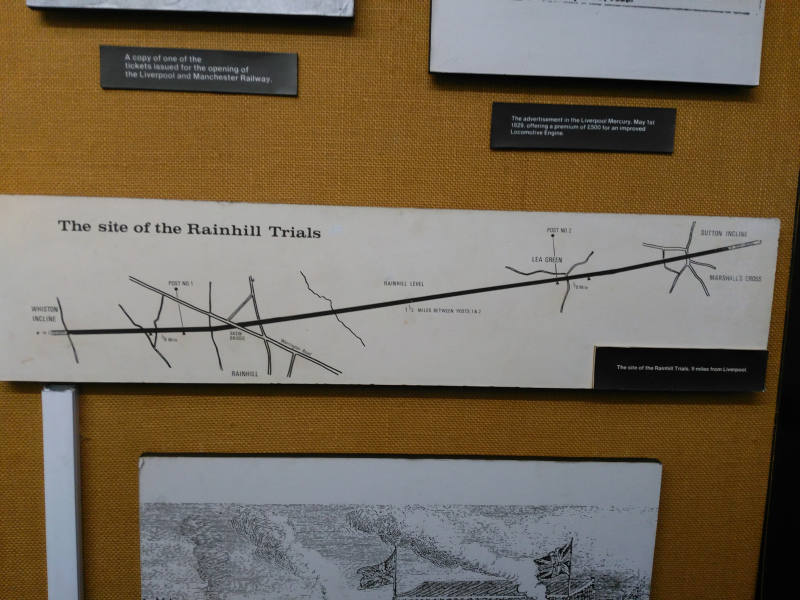What, when…
I write, of course, of the Rainhill Trials that took place in October 1829, an amazing eight years before Victoria came to the throne. This was a contest (or ordeal as the organisers called it) to find the best performing locomotive and, hopefully, to demonstrate unequivocally the superiority of such engines over horses and stationary engines, a conclusion by no means obvious at the time.
If you know anything about this, you will know that the winner was Stephenson's Rocket. The prize was a £500 premium (now worth somewhere between £40K and £2.2M) on top of the purchase price of the engine assuming it passed muster. Not to mention great publicity and future sales, a place in the Science Museum and a kind of immortality tainted only by the death of Huskisson.
…and where?
Well, I knew it was in Rainhill so I went there (by train from Liverpool, of course) and visited the little museum at the back of the Library. It's in a railway carriage (naturally).
And there's a map.

Which led to a narrow bridge over the Liverpool to Manchester railway, sadly not the original wooden bridge but probably at a fairly similar location.

And pointing the lens on my phone through the wire grille looking west, I saw this. Humour me and try to imagine Rocket being readied for its ordeal and then pushed by hand to the starting-post.

Now look east towards Manchester and imagine Rocket accelerating away towards Post 1 where the judge, Mr Rastrick, starts timing the run.

I guess everyone interested in the Liverpool & Manchester Railway makes this journey knowingly or otherwise in passing on the line beneath. Needless to say, the rest is history or, in this case, the long read that follows in Part 2.